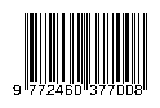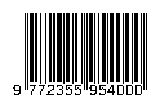Membangun Perilaku Inovatif Dosen Perguruan Tinggi
Abstract
Tantangan ke depan perguruan tinggi di Indonesia adalah kemampuan institusi pendidikannya dalam menempatkan diri sejajar dengan universitas-universitas terkemuka di dunia. Dosen merupakan SDM perguruan tinggi yang memiliki peran yang sangat sentral dan strategis dalam seluruh aktivitas di perguruan tinggi. Perilaku inovatif dosen dapat diwujudkan apabila dosen melaksanakan tugas dengan penuh kreatifitas untuk memberikan outcomes positif bagi perguruan tinggi. Perilaku inovatif dapat distimuli dengan iklim kreatif di perguruan tinggi. Sampel dalam penelitian ini adalah sejumlah 145 dosen perguruan tinggi negeri di Surabaya. Metode pengumpulan data menggunakan accidental sampling. Hasil penelitian ini adalah baik dukungan perguruan tinggi pada inovasi maupun kualitas hubungan dengan pimpinan berpengaruh signifikan pada perilaku inovatif. Peran iklim kreatif di perguruan tinggi hanya memperkuat hubungan kualitas hubungan dengan pimpinan pada perilaku inovatif.
Keywords
Full Text:
PDFReferences
Amabile, T. M. 1988. A Model of Creativity and Innovation in Organizations. In B.M. Staw and L.L. Cummings (Eds.), Research in Organizational Behavior Greenwich, CT : JAI Press, Vol.10, pp. 123-167.
Amabile, T., Conti I. dan Coon, H. 1996. Assessing The Work Environment for Creativity. Academy of Management Review, Vol. 39 No.5, pp.1154-1184.
Anderson, N.R. dan West, M.A. 1998. Measuring Climate for Work Group Innovation: Development and Validation of the Team Climate Inventory. Journal of Organizational Behavior, Vol. 19 No. 3, pp. 235-58.
Eisenberger, R., dan Rhoades, L. 2002. Perceived Supervisor Support : Contributions to Perceived Organizational Support and Employee Retention. Journal of Applied Psychology, Vol. 87, pp.565–573.
Ekvall, Goran. 1996. Organizational Climate for Creativity and Innovation. European Journal of Work and Organizational Psychology, Vol.5, No.1, pp. 105-123.
Graen, G. B., Novak, M. A., and Sommerkamp, P. 1982. The effects of leader-member exchange and job design on productivity and satisfaction: Testing a dual attachment model. Organizational Behavior and Human Performance, Vol. 30, pp. 109 –131
Graen, G. B. dan Scandura, T. A. 1987. Toward a psychology of dyadic organizing : Research in Organizational Behavior Vol. 9, pp. 175-208.
Graen, G. B.,dan Uhl-Bien, M. 1995. Relationship-based approach to leadership: Development of Leader-Member - Exchange (LMX) theory of leadership over 25 years: Applying a multi-level multi-domain perspective. Leadership Quarterly, Vol. 6, No. 2, pp. 219-247.
House, R. J., dan Dessler, G. 1974. The path goal theory of leadership: Some post hoc and a priori tests. In J. Hunt and L. Larson (Eds.), Contingency approaches to leadership, pp. 29 –55. Carbondale: Southern Illinois, University Press.
Isaksen, S.G., Lauer, K.J., Ekvall, G. dan Britz, A. 2001. Perceptions of the best and Worst Climates for Creativity: Preliminary Validation Evidence for the Situational Outlook Questionnaire. Creativity Research Journal, Vol. 1, No. 2, pp. 171-184
Katz, D. 1964. Motivational Basis of Organizational Behavior. Behavioral Science, Vol. 9, pp. 131–146.
Katz, D. dan R.L. Kahn, 1966. The Social Psychology of Organization. New York: John Wiley and Sons, Inc.
Kylen, S. F., dan Shani, A. B. 2002. Triggering Creativity in Team: An Exploratory Investigation. Creativity and Innovation Management. USA: MA Blackwell Publishers Ltd.
Liden R C, Sparrowe R T, Wayne S.J. 1997. Leader-member exchange theory: The past and potential for the future. Research in Personnel and Human Resource Management, Vol. 15, pp. 47–119
Moon, H. dan Marinova, S. 2003. Introducing a Circumplex model of Organizational Citizenship Behaviors. Presented at the 18 th Annual SIOP Conference, Orlando FLA.
Nemeth, C.J., dan Staw, B.M, 1989. Tradeoffs of Social Control and Innovation in Groups and Organizations. In L. Berkowitz (Ed). Advances in Experimental Social Psychology, New York: Academic Press, Vol.22, pp. 175-210.
Oldham, G.R., dan Cumming, E. 1996. Employee Creativity: Personal and Contextual Factors at Work. Academy of Management Journal, Vol. 39, pp. 607-634.
Organ, D.W., Podsakoff, P.M, dan S.B. MacKenzie, S.B. 2006. Organizational Citizenship Behavior: Its Nature, Antecedents, and Consequences, Thousand Oaks, CA : Sage.
Robbins, Stephen P. dan Timothy A. Judge,2011, Organizational Behavior, Fourteenth Edition, Person Education Inc.
Scott, S.G., dan Bruce, R.A. 1994. Determinants of innovative behavior: A path model of individual innovation in the workplace. Academy of Management Journal, Vol. 37, pp. 580 – 607.
Van Dyne, L. dan LePine, J. A. 1998. Helping and Voice Extra-Role Behavior: Evidence of Construct and Predictive Validity. Academy of Management Journal, Vol. 41, pp. 108–119.
West, M.A. dan Farr.J.L.1990. Innovation at Work In. M.A. West dan J.L.Farr
(Eds). Innovation and Creativity at Work, Chichester. Uk: John Wiley and Sons. pp. 3-13
Woodman, R.W., Sawyer, J.E. dan Griffin, R.W. 1993. Toward a Theory of Organisational Creativity. Academy of Management Review, Vol. 18, No. 2, pp. 293- 321.
Yukl, 2010, Leadership In Organization, Seventh Edition, Person Prentice Hall.
DOI: https://doi.org/10.21107/jsmb.v3i1.2566
Refbacks
- There are currently no refbacks.
Copyright (c) 2017 Praptini Yulianti

This work is licensed under a Creative Commons Attribution 4.0 International License.

Jurnal Studi Manajemen dan Bisnis by Universitas Trunojoyo Madura is licensed under a Creative Commons Attribution 4.0 International License.








